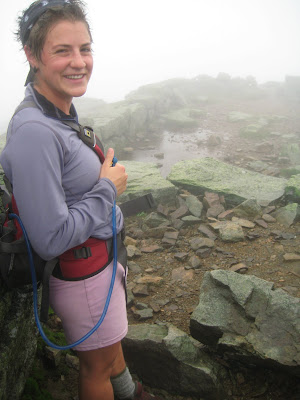
I am often frustrated, especially when talking to Westerners, who wield their magnificent Rockies, Cascades, and Sierras, by the difficulty of explaining that the Whites are indeed rugged and dangerous. The number of fatalities on Mt. Washington is a useful number to quote in such discussions.
Larry Price, a Mountain Geoecologist, lists three criteria in identifying high mountain landscapes. “High mountains should rise above the Pleistocene snow line, the zone of rugged and serrated topography associated with mountain glaciers and frost action; high mountains should extend above the regional treeline; high mountains should display cryonival processes such as frost-heaving and solifluction.” By this measure, the Whites qualify as high mountains—barely. The Presidentials exhibit various features formed by mountain glaciers, including the eastern ravines and an arête or two, while the alpine zone is notable, if small. Soil stripes are present, even if confined to tiny Monroe Flats.
I am reminded of a quote in Forest and Crag, Guy and Laura Waterman's wonderful history of hiking in the northeast. "Ferocious weather attacks these alpine zones, especially in winter. Winds elsewhere regarded as hurricane force are routine in these alpine zones...Taken with cold temperatures, frequent low visibility due to clouds and blowing snow, plus erratic changeability, Northeastern winter weather more than makes up for the region's lack of high elevation or consistent dramatic relief."
Washington, of course, is the site of the highest wind speed ever recorded. I’ve never gotten caught in wind over 100 mph, but I have felt some pretty strong breezes. This summer, when I was visiting Hilary Gerardi and her croo up at Greenleaf, our plans for a long day hike were ruined by the gale. We did notice, while devouring the latest adventures of The Pirates!, the steady increase of the peak gust on the Davis monitor. The anabatic wind, blowing up from the south, was funneled up the ravine encircled by Agony Ridge on the west side of Greenleaf, peaking in the tiny notch between the hut and the summit ridge; Eagle Lake, in the middle, was in a fury.
After trying our hand at drinking glasses of water in the wind, Hilary and I headed up the ridge to scout out conditions on the summit. The higher we went, the more the wind subsided, which was disappointing but made sense because Agony Ridge no longer constrained the air molecules. At the summit, a straggle of thru-hikers emerged out of the fog, looking vaguely hypothermic, though they were still energetic enough to badmouth the huts and assert the advisability of camping illegally. With little to see and peeing into the wind getting old, we headed down. It is one of the huts’ greatest luxuries that its inhabitants can habituate themselves to these initially fearsome conditions, and as Guy Waterman observed, such conditioning is one of the great joys of living in the mountains.

1 comment:
In the pseudo-geographical reference book Home Ground (ed. Barry Lopez), Bill McKibben (who lives, I believe, in Vermont) gives his definition of Mountain:
"Not simply higher than a hill; the very word mountain also implies a brand of majesty. On a mountain, normal processes are magnified...And they carry their own heightened psychological charge as well."
It is hard for us Westerners, perhaps, to recognize the Eastern brand of mountains because the threshold of mountain and hill is personal and fairly immune to context. Much of the requisite majesty lies in the knowledge of a mountain's raw elevation data, the remoteness of its summit.
Post a Comment